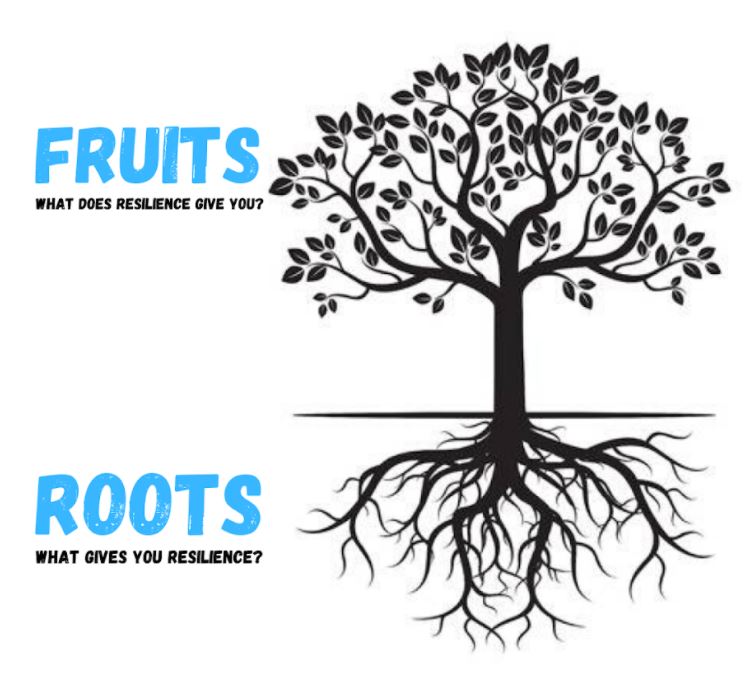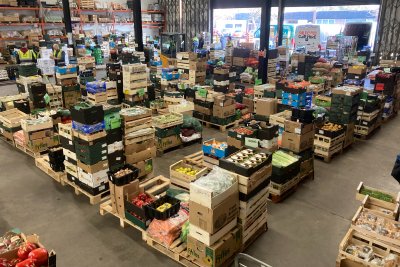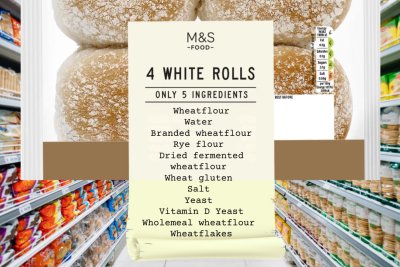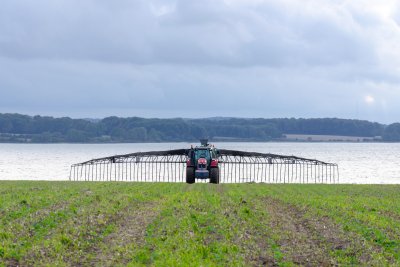
To protect our wellbeing this winter we must explore the roots and fruits of our own resilience
It would be an understatement to say that 2020 has been challenging. This is especially true for those working to eliminate food poverty, where exhaustion and burnout are on the rise. With a long winter ahead, our latest Food Power webinar focused on building our own personal resilience and in this blog, resilience trainer, Peter Lefort, shares his top tips on how to do just that.
Across the country, there is a sense of fatigue and exhaustion as we near the end of an ‘unprecedented’ year (yes.. I said the dreaded word). When dealing with a crisis or uncertainty such as the Covid-19 pandemic, and when working on such a vital issue as food insecurity, it is very easy to focus solely on the need of the community you’re working to support. Though heroic, this risks a downward spiral of working harder, neglecting our own needs, withdrawing, and ultimately burning out. To continue supporting those in need we must make sure we're also looking after ourselves. A useful way to do this is through building and maintaining our resilience. What does that mean in reality though? Resilience is like sustainability. It’s one of those words that we use, and overuse, without really being able to define exactly what it means or know how to action.
To truly understand resilience, we have to explore what it really means to us and how it will impact our lives before we can begin improving it. Otherwise there’s always going to be something else demanding our attention and our energy.
Enter the 'Resilience Tree', an exercise to build the mental muscles we need in order to make self-care as important to us as it should be.
- It starts with the trunk of the tree, with the roots of the tree at the bottom. This symbolises the roots of your resilience; the things that give you the ability to respond to shocks. For Food Power members this included things like sleep, spending time with family and friends, walks and faith. The key here is not about compiling an exhaustive list, just some examples of the kinds of things you associate with finding your own resilience.
- The next step is to ask yourself how and why? How can you achieve this, and why is it important? Usually, one of the answers will be obvious, but the other might not. It’s easy to know how to take a bath, but harder to say why it gives you resilience. Is it the warmth, the sense of peace? On the other hand, maybe it’s clear why creativity is important, but how do you find it?
- Next up, the branches, or in this context, the fruits of resilience. Here you note the things that resilience gives you. This is often harder, as it’s not a question we tend to ask ourselves. We know that resilience is good, but why? What does being resilient enable you to do? Here Food Power members noted confidence, productivity and stronger relationships.
- Like with the roots, the real insight is in how you explore the fruits. This time, it’s just one question; how does this impact your life? For example, can you put your finger on what it would actually mean for you, if you were happier? What would it enable you to do? More or better sleep, on the other hand, is easy to wrap your head around, but do you know how it would make you feel?
It’s crucial to consider these questions because learning to prioritise resilience is about recognising and improving positive patterns. If we don’t understand how our roots work, or we don’t understand what our fruits will give us, then how can we be expected to really believe that they are more important than finishing that email, answering that phone call, or giving support to someone else? We are constantly conditioned to see feedback loops that tell us our actions have value; from likes on social media to appraisals from managers. If something doesn’t give us instant feedback, it’s hard for us to value it.
But the language we often use to describe the activities that make up our roots is the language of ‘doing nothing.’ We know it’s important to us, but we dismiss it when we talk to others. Deep down we know we’re not doing nothing, but without understanding the consequences of our actions, we struggle to really believe that they are valuable. This is what the Resilience Tree aims to change. It is a tool to dig deeper into the consequences of our actions, to help us genuinely understand the importance of looking after ourselves.
If, for whatever reason, you don’t like trees, then make it something else. Perhaps a 'Resilience Lamppost'? It doesn’t really matter. What matters is that it works for you. Use it, share it with others, tell your friends, colleagues and manager what is important to you and why, and ask them too. They will become your allies in resilience and we all need that right now. Through this, we will move from thinking that resilience is important, to choosing to make it a priority.
Watch the webinar in full here and read more about self-care and stress and burnout. You can also read other blogs in our winter resilience series, including making the most of the Covid Winter Grant Scheme and lessons for holiday food provision this winter.
Food Power: Food Power is an exciting new programme working with local communities across the UK to strengthen their ability to reduce food poverty.
Sustain
The Green House
244-254 Cambridge Heath Road
London E2 9DA
020 3559 6777
sustain@sustainweb.org
Sustain advocates food and agriculture policies and practices that enhance the health and welfare of people and animals, improve the working and living environment, promote equity and enrich society and culture.
© Sustain 2025
Registered charity (no. 1018643)
Data privacy & cookies
Icons by Icons8







